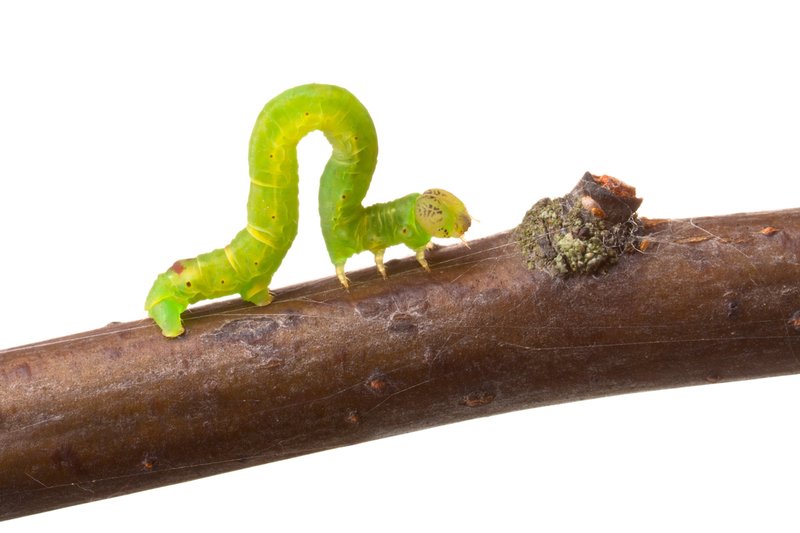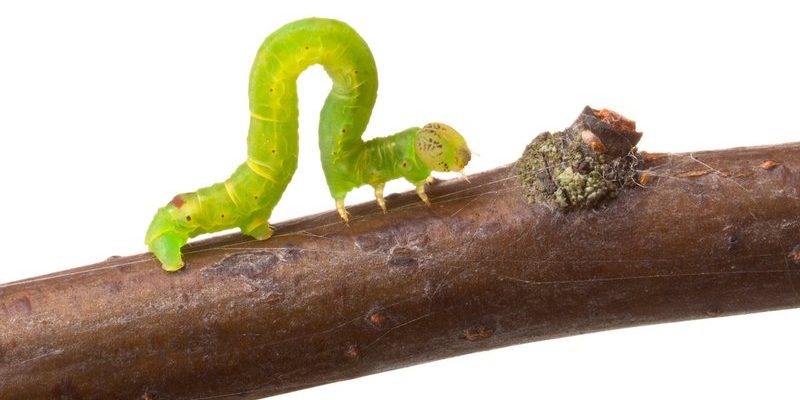
So, how do inchworms fit into the picture of our urban forests? Well, these little guys play an important role in our ecosystems, even if we don’t always see them. They help with the cycle of life, serving as food for birds and contributing to the health of our trees. But the relationship isn’t always easy. Urban environments can be challenging for wildlife, and inchworms face their own set of obstacles. This is where coexistence tips come in handy. Let’s explore how we can support inchworms and their habitats in our cities.
What Are Inchworms?
Inchworms are the larvae of moths from the family Geometridae. You might recognize them for their unique movement: they “inch” along by looping their bodies. They’re usually green or brown, blending in perfectly with their surroundings, making them a bit tricky to spot. Inchworms can often be found munching on leaves, which is essential for their growth.
During their early lives, inchworms can be vital for the ecosystem. They serve as a food source for various birds and insects. If you think about it, they’re like the snack vendors of the forest, providing nourishment for the next level of the food chain. Their feeding habits can also help control plant growth, ensuring a balance in the urban forest’s ecosystem.
To put it simply, inchworms are small but mighty players in the game of nature. Without them, we might see an imbalance that could affect larger wildlife. Plus, they’re just fun to watch! Just remember, they’re not harmful to the trees; they’re a natural part of the cycle.
Why Urban Forests Matter
Urban forests are more than just patches of green in our cities. They offer countless benefits, from improving air quality to providing spaces for recreation. They’re like the lungs of the city, absorbing carbon dioxide and releasing oxygen. Isn’t that pretty cool?
You might be wondering how exactly urban forests support wildlife, including inchworms. These green spaces offer habitat and food for a diverse range of species. Trees provide shelter, while shrubs and undergrowth can be places for inchworms to thrive. Urban forests also help with stormwater management by absorbing rain, which is vital for maintaining healthy ecosystems.
Moreover, urban forests enhance our quality of life. They provide peaceful retreats from the hustle and bustle of city life, invite us to connect with nature, and increase property values. When we nurture these environments, we nurture ourselves. It’s all interconnected!
Creating a Suitable Habitat for Inchworms
To help inchworms thrive in urban forests, we can take some simple steps to create a suitable habitat. Here are some ideas:
- Plant Native Trees: Choose trees that are native to your area. Native species attract local insects and provide food for inchworms.
- Avoid Pesticides: Many pesticides can harm inchworms and other beneficial insects. Consider using organic methods for pest control.
- Encourage Biodiversity: By planting a variety of plants and trees, you create a balanced ecosystem where inchworms can flourish.
- Maintain Leaf Litter: Leaving fallen leaves on the ground can provide a rich habitat for inchworms and other critters.
Creating a welcoming environment for inchworms is just one part of the larger picture. By supporting local flora, you’re also promoting the health of the entire urban forest.
How to Observe Inchworms Responsibly
If you’re interested in observing inchworms, there are a few responsible practices to keep in mind. It’s like being a nature detective—you want to watch, not disturb!
First, take your time and look closely at the leaves of trees. Inchworms are often hidden among the foliage. Don’t be surprised if you see a tiny inchworm munching away. Just remember to observe from a distance. Touching or moving them can disrupt their natural behavior.
Second, keep a journal of your inchworm sightings! Documenting where you see them and what they’re doing can be a fun and educational activity. It helps you connect more with nature and understand their behavior and habitat. Plus, sharing your findings with friends might inspire them to appreciate these little creatures too.
Finally, participate in local conservation efforts. Many urban areas have groups dedicated to maintaining and protecting urban forests. Joining a cleanup or planting event is a great way to get involved and learn more about the wildlife, including inchworms, in your area.
Challenges Inchworms Face in Urban Areas
While inchworms are resilient, they do face a few challenges in urban forests. One significant issue is habitat loss. As cities expand, green spaces shrink, pushing wildlife into smaller areas. Imagine being squeezed into a tiny room; it’s not very comfortable!
Another challenge is pollution. Urban areas can have higher levels of pollutants, which can affect the health of plants and insects. Inchworms depend on healthy vegetation to survive, so pollution can have a ripple effect on their populations.
Lastly, predation is another concern. While inchworms have natural predators, urban environments can sometimes exacerbate this. Birds, spiders, and other insects may struggle to find food if there aren’t enough plants to support all these creatures. It’s like a delicate balancing act!
Being aware of these challenges helps us be better stewards of nature. The more we understand, the more we can advocate for preserving urban forests.
Engaging the Community for Conservation
The best way to protect inchworms and urban forests is by getting the community involved. Creating awareness about the importance of these ecosystems is crucial. Here are some ideas to engage your neighbors:
- Host Workshops: Organize workshops about urban forestry, focusing on species like inchworms. Engaging the community through education is powerful.
- Start a Community Garden: Encourage residents to participate in gardening projects that feature native plants. It can provide a habitat for inchworms and beautify the neighborhood!
- Share Information: Use social media to educate others about inchworms and their role in urban ecosystems. Sharing fun facts and photos can spark interest.
By fostering a sense of community around conservation, we can make a real difference. When people understand the importance of urban forests, they’re more likely to take action to protect and enhance them.
Inchworms may be small, but their contribution to urban forests is significant. By taking simple steps, we can help create environments where these creatures can thrive. From planting native trees to engaging our communities, every action counts.
Remember, it’s all about coexistence. The inchworms inching their way through our urban forests remind us of the beauty and balance in nature. Let’s do our part to protect their habitats and ensure that urban forests remain vibrant ecosystems for generations to come. After all, we’re all part of this great big cycle of life!

